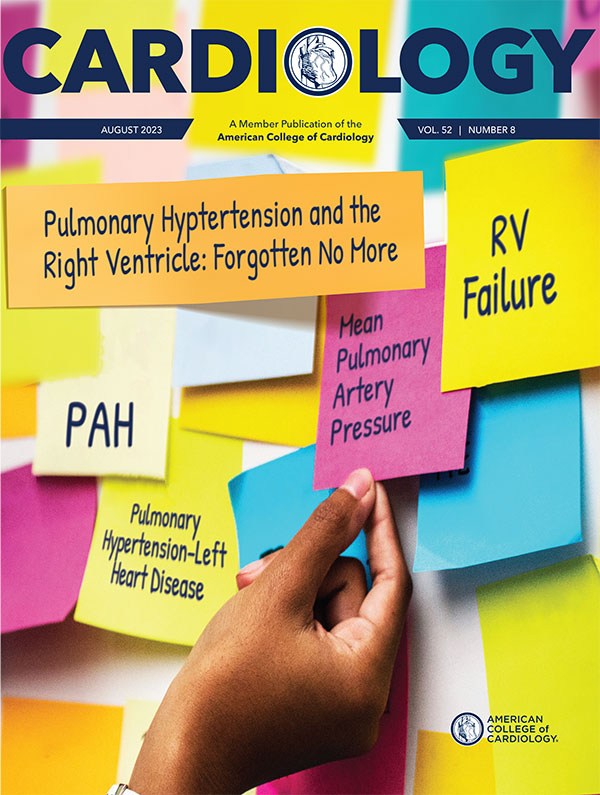Feature | Cardiac Myosin Inhibitors For Obstructive HCM: Key Points to Remember

The following are key points to remember from a state-of-the-art review by Ostrominski, et al., published in JACC: Heart Failure looking at cardiac myosin inhibitors for the management of obstructive hypertrophic cardiomyopathy (oHCM).
- Up to two in three patients with HCM have a pathogenic variant in genes encoding the cardiac myosin heavy chain (MYH7). Accordingly, two cardiac myosin inhibitors – mavacamten and aficamten – have been developed that modify myosin mechanochemistry and reduce sarcomere force generation, myocardial hypercontractility and left ventricular outflow tract (LVOT) obstruction in a dose-dependent fashion.
- Compared with mavacamten, aficamten has a shorter half-life, enabling more rapid dose titrations and drug washout, thus it has a wider therapeutic window. Additionally, unlike mavacamten, aficamten does not have significant drug-drug interactions.
- In a randomized trial (EXPLORER-HCM), mavacamten has been proven to be superior to placebo for improving NYHA functional class and peak oxygen consumption in oHCM, with a reduction in obstruction and cardiac biomarkers. Benefits have been sustained out to 84 weeks.
- In another randomized trial (VALOR-HCM) with patients with oHCM and NYHA class III-IV symptoms, mavacamten reduced the proportion of patients needing myectomy compared with placebo (absolute difference, 59%), sustained to week 32.
- Similarly, in a phase 2 trial with aficamten, there was a significant and dose-dependent reduction in resting and post-Valsalva LVOT gradient observed as early as two weeks, with improvement in NYHA class and levels of natriuretic peptide. A phase 3 trial with aficamten is ongoing.
- Since all trials with cardiac myosin inhibitors have included high baseline rates of the use of beta-blockers or calcium-channel blockers, both beta-blockers and nondihydropyridine calcium-channel blockers remain first-line treatment for oHCM. In patients with refractory symptoms on these agents, cardiac myosin inhibitors may be considered along with septal reduction therapy or disopyramide.
- A short trial of cardiac myosin inhibitors may help delineate whether symptoms are secondary to oHCM or other comorbid conditions with similar symptoms, as the clinical trials show these agents demonstrate an effect within four to six weeks.
- Cardiac myosin inhibitors also may be used in patients with persistent symptoms after septal reduction therapy.
- In clinical trials, nearly 6% of participants needed mavacamten discontinuation due to reversible reduction in LV ejection fraction to <50%. Therefore, mavacamten has been approved by the U.S. Food and Drug Administration (FDA) with a black box warning on associated HF risk with systolic dysfunction. Drug safety monitoring is currently available only through an FDA-mandated surveillance program needing frequent monitoring via echocardiography. Additionally, mavacamten is available only through a registered pharmacy for a one-month supply.
- In trials, one in three to one in four patients with oHCM were nonresponders to cardiac myosin inhibitors. These patients likely have a more advanced phenotype or there may be other factors playing into symptoms such as valvular or subvalvular abnormalities or noncardiac comorbidities.
- The effect of cardiac myosin inhibitors in young patients (<18 years old) with oHCM has not been studied. A phase 2 trial of mavacamten in nonobstructive HCM showed a reduction in biomarkers and a phase 3 trial is ongoing.
- Commercial mavacamten is currently priced at $89,500 a year in the U.S. Accordingly, at present, septal reduction therapy is more cost-effective than cardiac myosin inhibitors.
Click here to access the full Key Points from Supriya Shore, MD.
New "Meeting in a Box" HCM Education

Get up to speed on the diagnosis and treatment of HCM with ACC's "Meeting in a Box" – and use the tools to host an educational activity with your colleagues. Part of the College's Accelerating Innovation for Medical Excellence in Hypertrophic Cardiomyopathy (AIME - HCM) initiative, the "Box" provides instructional support tools and resources to build a presentation and more. Click here for additional information and to get started.
Clinical Topics: Heart Failure and Cardiomyopathies, Acute Heart Failure
Keywords: ACC Publications, Cardiology Magazine, Heart Failure, Cardiomyopathy, Hypertrophic, Heart Ventricles
< Back to Listings


